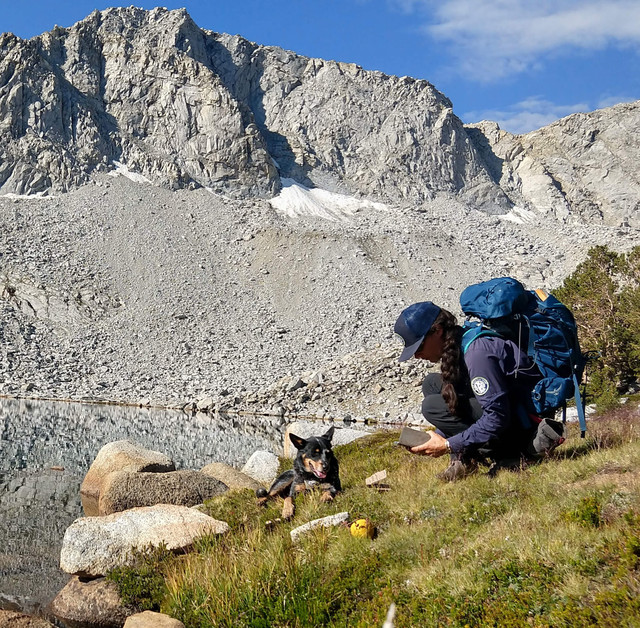
"When we got our first Kuranda beds, it revolutionized how we were able to make up our 'dog dens.'"
"We really do feel like Kuranda beds have helped enrich the lives that we try to provide our dogs when they’re not out in the field. Rest is just as important as work."
Kuranda: Tell us about Rogue Dogs.
Rogue Dogs: Rogue Detection Teams was founded in 2019 alongside partner and co-director, Heath Smith. Rogues is a conservation detection dog program specializing in developing noninvasive methods to research and collect data on rare & endangered wildlife and other odors alongside our detection dog partners. Heath has been working in this field for about 20 years, and I have for the last 15 to 17, I've kind of lost track. While Rogues is still pretty new, we're not new to this field.
We call our canine handlers, “bounders,” because we are bound to developing this method, bound to the environments we work in, and bound to the dogs whom we’ve adopted to conduct this work. They were deemed unadoptable due to their ball motivation, hence they are the “rogues” of the shelter world.
Kuranda: So where is Rogues based?
Rogue Dogs: We're based in Washington State near the British Columbia and Idaho border, but our work takes us throughout the United States and abroad.
We're fieldwork-oriented and travel to where our remote, rugged surveys are to search for the data we collect.

“When we got our first Kuranda beds, it revolutionized how we were able to make up our dog dens.”
Kuranda: So, I know you’re on the road. Where are you now and what are you doing?
Rogue Dogs: Currently, I am in northern Idaho on a carnivore project sniffing for species like grizzly and black bears, mountain lions, bobcats, coyotes, and wolves. Researchers are interested in learning about the diets of these species in different seasons. This is our fourth time here this year and we'll come back one more time. So, we’re here for a brief period, collecting as much data as we can which will provide a snapshot in time for how these species utilize the landscape. This is just one of several projects we have this year, though. Some of our projects can be a week-long, several months-long, or even a year in length. It all depends on the research.
“We are in northern Idaho on a carnivore project. Sniffing for species like grizzly and black bears, mountain lions, bobcats, coyotes, and wolves.”
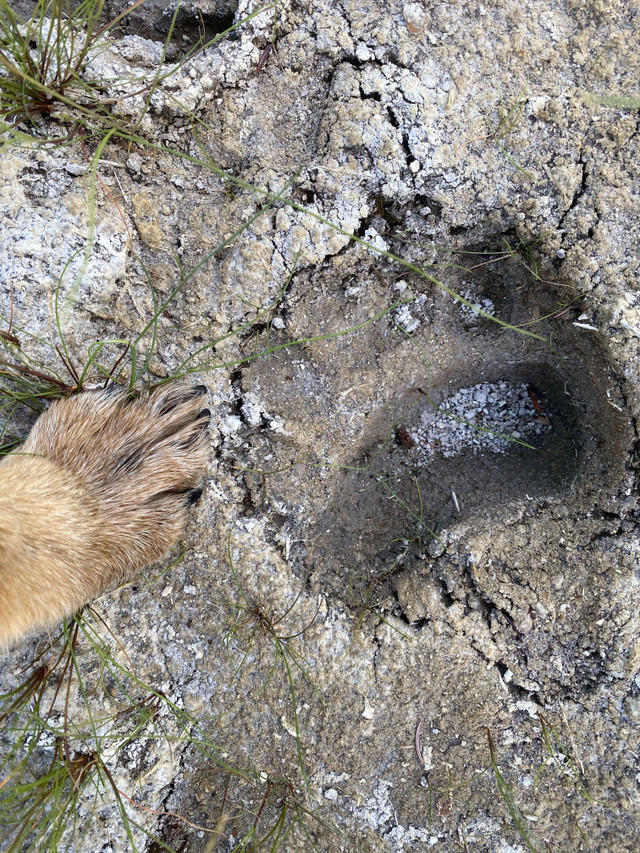
Kuranda: How many of you are on this project?
Rogue Dogs: There are two of us on this project, myself and my partner, Heath Smith but we have three other detection teams working in Oregon on an ungulate project, doing deer pellet surveys.
Kuranda: You said ungulate, what does the term mean?
Rogue Dogs: Ungulate is another term for hoofed animals such as deer, moose, and elk.
Kuranda: What kinds of organizations request your services?
Rogue Dogs: We work with both federal and state agencies such as USFWS, US Forest Service, BLM, USGS, as well as universities and tribal nations. We also work with nonprofits such as The Nature Conservancy and the World Wildlife Fund, so it's pretty diverse and it depends on the research or the objective.
Kuranda: You live in a Yurt?
“Our property has a main house but we live over in a yurt. We like to be closer to the woods.”

Rogue Dogs: Haha, yes. The property where our detection dogs call home when we’re not in the field has a main house but we live over in a yurt. We like to be closer to the woods. We provide the main house as a home-away-from-home for our bounders, or canine handlers, so they have a place to live when they're not in the field. Otherwise, finding housing is incredibly challenging.

“We really do feel like Kuranda beds have helped enrich the lives that we try to provide our dogs when they’re not out in the field. Rest is just as important as work.”
Rogue Dogs: As for our dogs, they have had many different living situations prior to coming to our program. Maybe they have been dangerous; whether they're eating blankets or getting into things they shouldn’t. With the Kuranda beds, our dogs have their own personal spaces where they feel safe, where they can relax, and that they know is theirs. It's really great what Kuranda has done. When we got our first Kuranda beds, it revolutionized how we were able to make up our “dog dens.” We feel lucky we have a fleet of them now and when we adopt our dogs to their bounders, we’d like to give them away as adoption gifts.
“We want to make sure that our dogs can continue their work in the field by coming back to a place that's safe.”

Kuranda: I saw on your website a story you wrote about being in Yosemite at 12,000 feet with just Filson your dog for company?
Rogue Dogs: Yes, we mainly work alone- I mean other than with our canine partners, of course! We have daily satellite communication check-ins, so someone always knows where and how we are.
The project in Yosemite National Park was incredible. We worked with Park Biologists as well as researchers at Oregon State University to survey for mountain lions, Sierra Nevada red foxes (an endangered species), as well as fishers, an elusive member of the weasel family. Publication of the work is here: https://esajournals.onlinelibrary.wiley.com/doi/10.1002/ecs2.4634.
“We mainly work alone. I mean other than with our canine partners.”
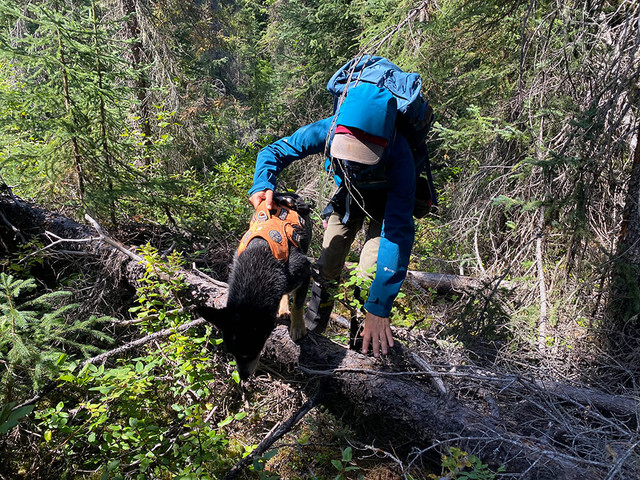
Rogue Dogs: We relied on close communication with Park biologists. Yosemite is a mostly roadless wilderness and part of the study design made it necessary for the Park’s wildlife team to assist in portering in supplies to the detection teams, like food and sampling gear, and packing out the data we collected. Even though I was alone in the field, I'd see someone every couple of weeks, in between these resupply trips. They might stay overnight before they backpacked out, or just continue on to the next team. They are an incredibly tough and hardworking crew. So, we weren't completely out there for months without seeing anyone, but pretty close.
Kuranda: So how long were you actually out that time in Yosemite?
Rogue Dogs: It was a two-year project and I was one of three detection teams. It was three to four months long each time and my longest solo stint was approximately 16 days. The rest of the time I conducted a week here or three days there depending on the needs of the backpacking trips. One of our detection teams was out for a full month on a backcountry stint.
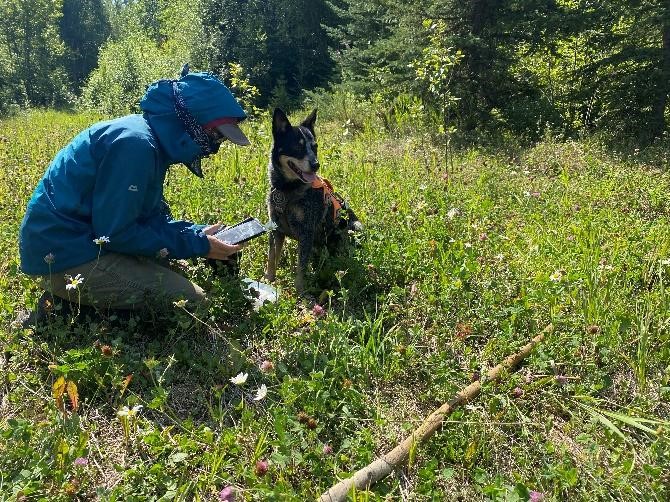
“(The project) was three to four months long each time and my longest solo stint was maybe 16 days.”
Kuranda: Are all of your dogs rescues?
Rogue Dogs: Yes, or owner releases, although sometimes the owner releases are rescues, too. One of our dogs, Pips, was returned to a shelter six different times; three times to a shelter before they were moved to a rescue and was returned three times again for being “too much.” The rescuers wondered, "Where is this dog going to find a home?” They researched high and low when they found us, they realized, “Oh my gosh, this dog is perfect for them!”
Frequently, that's how we learn about the dogs we adopt: from the rescue and shelters who search for best-case situations for the animals in their care. That is why we call our dogs, “rogue dogs.” They've been labeled unadoptable. They are the misfits and rapscallions of the shelter world. No one can handle them. No one wants them. But they have this special little secret skill that we can tap into for the greater good of our ecosystems and environment.
“That is why we call our dogs the ‘rogue dogs.’ They've been labeled unadoptable. They are the misfits and rapscallions of the shelter world. No one can handle them. No one wants them. But they have this special little secret skill that we can tap into for the greater good of our ecosystems and environment.”
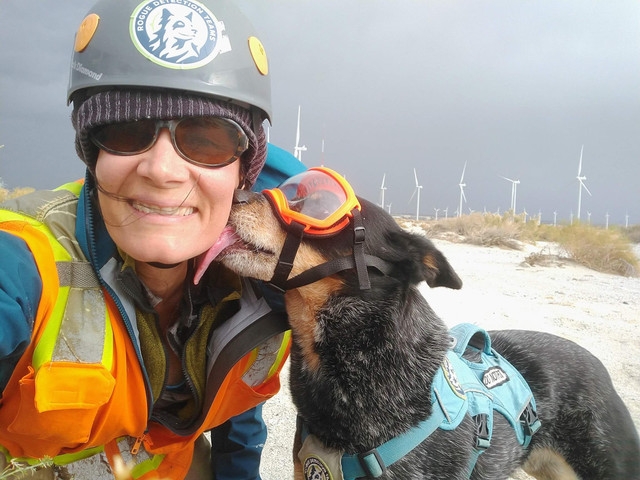
Kuranda: What was that word, the term you call it, ball drive?
Rogue Dogs: Yes, although it’s also known as fetch-obsession, our dog’s secret skill is their ball/ toy drive, or motivation.
Kuranda: Police & Military canine operations almost always use either German Shepherds or Belgian Malinois because they have among the most sensitive noses for scent. With your dogs, it doesn't seem to matter what kind of dog they are. They just gotta have a lot of energy.
Rogue Dogs: Yes and no. A sensitive nose is something we want, too, but in general, dogs have incredibly sensitive noses. It's not that we turn our backs on purebreds, either. We love all dogs. It’s just, the German Shepherds and Belgian Malinois of the world tend to not be in shelters because they are purebreds. People invest a lot to have one of these specialized dogs, and in the conservation field, funding is scarce.
Meanwhile, there is this untapped resource for wildlife and conservation in animal shelters and part of our mission is to find these dogs who would not otherwise be adopted for their incredible drive, and give them purpose. We don't need to test their nose if they have this innate desire already built in.

“What we look for is this fetch obsession. It's critical how we communicate and reward our dogs for locating precious data.”
Rogue Dogs: What we look for is this fetch obsession. It's critical for how we communicate and reward our dogs for locating precious data on endangered wildlife, invasive species, viruses, and plants. You name it, they can do it. Not all dogs make great detection dogs. For example, some dogs might excel at tracking and trailing, which is not what we do.
It’s also common to mistake intense energy for fetch obsession. In fact, we have slower dogs in our program that are perfect for the delicate work of sniffing for endangered caterpillar larvae, finding bumblebee nests, or working on the bow of a boat to find orca scat. That’s because it’s not just intense energy that’s needed: it's this overarching desire to play fetch. The desire to work can manifest differently in different dogs and we place dogs of different abilities and capacities into work where their unique traits will shine.
We're one of the few programs that adopt heelers, for example, and we hear frequently, “Oh, but don’t they chase animals? How do you work with cattle dogs?” When we provide fetch-driven dogs of any breed an outlet for their needs, while also creating a partnership with them based on mutual trust and respect, it becomes more important to these dogs to work alongside us as a team as opposed to chasing something that moves.
Kuranda: You said something interesting about being on the bow of a boat sniffing for orca scat.
Rogue Dogs: Yes, some years back, a few of our dogs, like Jack and Dio, and bounders, like Heath, Collette, and myself assisted in orca research. This work is being carried on by “Eba the Whale Dog,” and her handler, Dr. Giles with Wild Orca (https://www.wildorca.org/).
The work was great for dogs who weren't as active or nearing retirement. Working on a boat can be frustrating for a young, active dog because they can’t lead us to an odor with their own four legs but for our older dogs who are, say, 10 to 11 years old, this project gave them an outlet for their needs.
Kuranda: Do they tell you which way to turn if they're on the bow of a boat?
Rogue Dogs: Yes, it's teamwork- between the boat driver, the bounder, and the detection dog, hence why our work is “Detection Team,” not just detection dog. The dog points with their nose but we don't just willy-nilly drive in the ocean. The boat driver understands the currents, tides, and assesses the wind direction, and we all have eyes on the orcas to maintain the required distance away from this endangered species. The handler then communicates the cues she is receiving from her dog to the boat driver, who runs transects perpendicular to the “odor cone,” or where the dog is receiving the scent.
Imagine an invisible cone and as the dog gets closer to the source of the odor, the distance between the cross sections of that cone gets smaller. That's what the dog is helping us find: they narrow the cone to a pinpoint, to show us humans where that odor, or data, is floating on the ocean before it sinks.
It's the same on land as it is on the sea, it's just on the sea, a closer coordination is required between all three members. We would never find the data without the dogs, but we need a very specialized person to read the dog’s changes in behavior and guide the surveys.
“It's the same on land as it is on the sea, it's just on the sea, a closer coordination is required between all three members.”

Kuranda: If the dog runs to the stern you know you've passed the orca.
Rogue Dogs: Exactly, and so hopefully that doesn't happen! We run transects even when they're not “on odor,” so that when the dog catches the odor, we're far enough away to avoid running over the sample. This would cause the sample to sink, and then we'd lose it. We're talking about, in a good year, maybe getting 90 samples over the course of four months so every single sample is critical.
Working on land, if you think about it, is more challenging though because there are mountains, foliage, and different air currents that can get trapped in valleys or blow off ridges. It's much more complex. The dogs are using everything- their body, minds, and noses to detect data. If the dog loses the odor, it's up to the bounder to assess, “Okay, we are in this steep drainage, he was scenting over here so I'm going to climb up this way to see if he catches odor again,” because we know this is how air moves on the landscape.
A good way to think about it is how wildland firefighters understand wind and airflow to best fight fires. It’s very technical. We use the same wind theories to guide our dogs into odors.
Unlike wildland firefighters, though, our bounders are also ecologists and biologists. We understand the ecology of our study species and work landscapes differently based on our knowledge of where a particular species travels, rests, or hunts.
Kuranda: If the dog finds some scat and identifies let’s say a wolf, how do you get the dog to not just keep finding the same wolf's scat?
Rogue Dogs: That's a good question. When we conduct initial odor introduction for a new species, we ask our project partners for multiple training samples from wild individuals. We prefer wild samples because "zoo-doo," or scat from animals who live in captivity, does not mimic a wild animal’s diet. When thinking about it from the dog’s perspective, the diets are individual odors and smell differently. A dog's olfactory abilities can pinpoint odors down to individual contents. Dogs are so incredible in this way.
“What we ask from them is multiple samples, preferably from wild individuals, because what we call "zoo-doo" is not going to mimic anything that an animal would eat in the wild”

Rogue Dogs: To help our dogs generalize to the species, we request genetically confirmed samples from multiple individuals, from both males and females, to provide our dogs a complete odor profile. What we're teaching the dogs is, "We don't want just this one individual, we want this entire species. And we don't want this specific diet but ALL of the diets from ALL of the individuals, and it could smell anything like this.”
A good example is a project where we were surveying for fisher (a small animal in the weasel family). Our dogs started locating wasp nests in addition to the fisher scats and we realized that because fishers eat wasps, and we were rewarding them for samples with wasps in them, the dogs thought, "Well, I guess you also want wasps?” Thinking about it from the dog's point of view, this is exactly what we were communicating.
That being said, and this is what's so incredible about detection dogs– we can also teach these same dogs to zero in on a single individual. Before DNA extraction became as readily utilized as it is today, Heath was working with his detection dog Alli, and asked her, “Okay, here's a lineup of 10 grizzly bear scats and I need to know which of these grizzly bear scats are from the same individual.” With her nose, Alli told Heath, “Sample X and sample D are from individual A. All those other samples are from a different individual.” This was what we called “matching work,” where the dogs matched samples to the individual. Researchers used this to understand a specific bear’s range and their individual habitat-use requirements. So, detection dog teams can help detect many wolves, or just one wolf depending on the research objective. It just a different amount of development to conduct the various work, but it’s possible.
Kuranda: How many detection teams do you have?
Rogue Dogs: We currently have six teams and 14 dogs in our program. Bounders assist at different times of the year to care for the dogs who are not on projects. The dogs are each at different stages in their career, ranging from active, semi-retired to fully retired.
When bounders become bonded to the dogs they work with, they are adopted into their personal families, and in that way, Rogues is able to adopt new dogs for the new detection teams we teach.
Kuranda: If you don't have projects for all those dogs what do they do?
Rogue Dogs: They're our family. They live with us. Our dogs receive daily enrichment and each has their own special home to come back to. That's actually where the Kuranda beds come in. Each dog has their own Kuranda bed with a memory foam pad underneath. When they're not in the field they have their own personal den to come back to.
“We want to provide them with daily enrichment and walks and their own little special homes.”

Rogue Dogs: They've gone through a lot before they come to us. Sometimes we adopt them when they're already four years old. Where did they come from? What was their life before? We may never know and we want to give these dogs the best life possible, both in and out of the field.
Kuranda: Do you keep them in a kennel or do you keep them in your homes?
Rogue Dogs: A mixture of both. The word “kennel” can have different meanings depending on the situation. Heath and I live with seven dogs in our yurt, for example. Not all of our dogs get along with one another, and that’s okay. They each have their own den, or large wire crate outfitted with a Kuranda bed, and throughout the day, they receive lots of individual attention in between resting in their personal, safe places. Our goal is to provide them with a balance between a rich life spent in the field, and a restful, home life.
Many are surprised we can live with such intense high-energy dogs in a home situation. Weren’t these dogs deemed “too much”? What we’ve found is that once these dogs are provided an outlet both for their mental and physical needs, they can actually look like “normal” dogs. They are in the field anywhere between 6 to 9 months of the year on intense wildlife detection projects, so when they are home, and just like humans, they like their R and R, too.
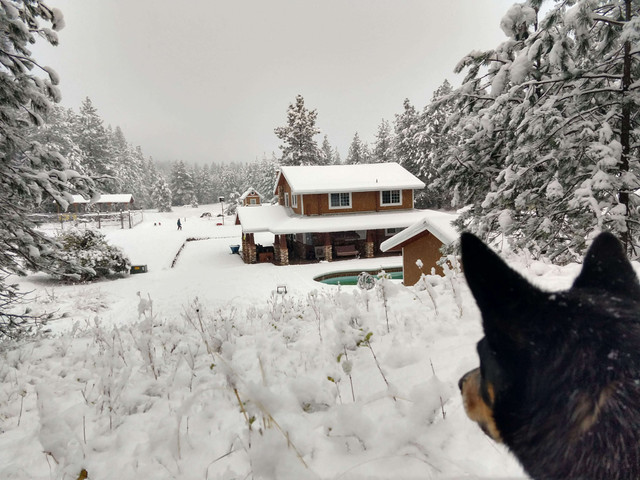
“We have five different rooms where these dogs can stay. You could think of it as a kennel, but it's something more along the lines of their home.”
Rogue Dogs: For our new dogs who aren't bonded to an individual bounder yet, we have what we call our “dog dens.” We have five different rooms where these dogs call home. With 60 acres of wooded trails, each dog gets out on daily walks and hikes, they play scent games, they go swimming (we have a pool)-- we really just want it to be a dog's life, you know? The best dog life possible.
When the dogs are on a project, they're always with their handlers. We sometimes have a field house or barracks, but many times we’re in a hammock, tent, or sleeping out of our vehicles to be close to our survey sites. Currently, we're at a motel. It really just depends on what’s available in the rural places we work in, and what funding is available for a particular project.
In the “off-seasons” or in between projects bounders either live at our property in Washington or visit family/ live in their home states with their dogs until their next field season starts again.
Kuranda: On your website it looks like you're looking for employees, people interested in your field or learning to do what you're doing?
Rogue Dogs: Well, not actually. At least not currently. The inquiry form on our website is where people who want to learn, “how to become a detection dog handler” can reach out to us. We share information to guide best practices, highlighting the sensitive nature of this field.
There are more people looking to get into this field than there are jobs. Some have gone the route of, "Well, if you don't have jobs, I'm just going to go teach myself.” That's incredibly dangerous for this field because there are ethical considerations when conducting this work. As professionals in our field, it’s one of our responsibilities to maintain the viability of this method for future use. It's a group effort although many who are new to this field may not realize it. Everyone, from veteran teams, researchers hiring detection teams, and new persons looking to get into this field needs to be on board with putting our best paws forward, so to speak.
We take the opportunity to share, "Hey, this is why it's so critical to understand this field.” If a person has not done a lot of fieldwork, for example, they may not be comfortable in this lifestyle.
We know our work can look “sexy” or pretty from the outside looking in, but it's really hard. It’s scientific research and we take the welfare of our dogs, the health of the wildlife, and the ecosystems we work in seriously.
It's not, “Get a dog, go explore nature.” I would love that job if that existed, too. There's a lot of pressure riding on every survey we conduct, and we're usually working in places that are not favorable for hiking; places no one wants to explore. We're tasked with determining whether an endangered species exists in a marginalized, human-altered ecosystem and we're typically called in as a last-ditch effort:
"Okay, we tried all of these other methods. They didn't work. Let's bring in the dogs.”
Rogue Dogs: For people who haven't spent a lot of time in the woods, this work can be scary, too. Fieldwork is unpredictable and dangerous. We provide safe operating guidelines, instructions on this method, and how to communicate and work alongside detection dogs but it's up to the individual to be knowledgeable and safe in the backcountry. This comfort only comes with time and experience. As such, the best way for a person to prepare for this field is to gain experience working in different environments, be this tropical jungles, alpine ecosystems, or the desert– all environments our teams have worked in.
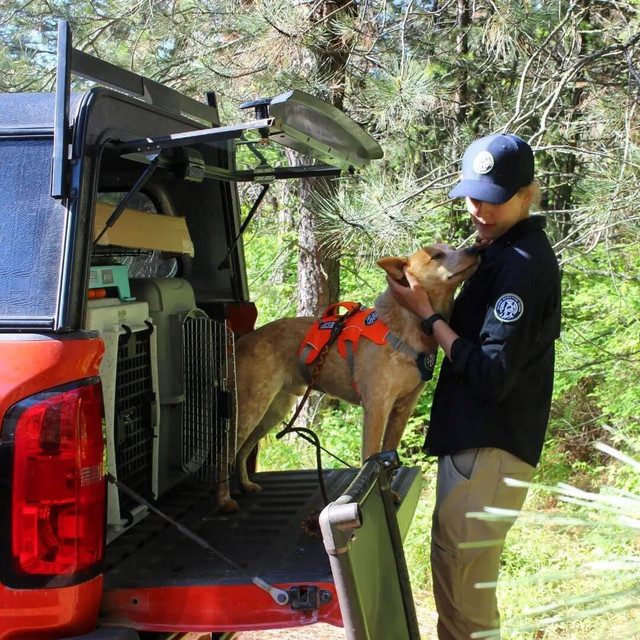
“I gained much of my experience from a program called The Student Conservation Association.”
Kuranda: I'm assuming that in order to also do what you are doing you have had to have had a strong education in environmental or conservation sciences?
Rogue Dogs: Mostly you'd be correct. You're speaking to one of the few people in our program who came into this field from a different background. I'm actually an English Literature major but before I even knew that this field existed was to volunteer on a lot of different fieldwork projects, without dogs. We actually do not look for a background in dog training in new applicants because what we do is not dog training– it’s fieldwork.
Through volunteering on different internships, I learned that I was passionate about wildlife and conservation. I gained experience that ultimately made me a candidate to work alongside detection dogs. That's what I tell other people too; “If you want to start working with detection dogs for wildlife research, first see where you can help organizations that are trying to help wildlife.”
I gained much of my experience from a program called The Student Conservation Association (https://www.thesca.org/). They place aspiring early-career youth in a variety of different outdoor work environments, whether with national parks or government agencies. In exchange for assistance with on-the-ground research, interns receive an education award.
Another way to get involved is by working at an animal shelter to learn whether being around high-drive dogs is something that is appealing. A lot of people write us saying, “Here's my pet dog, I want to do this work, now teach me.” But that's not how it works. Getting a dog is not the first step.
Some dogs live to do this work while others do not. At least in Rogues, we do not “build drive.” We find the dogs who already have the innate need to work, who are out of options, who need this life more than anything else, and provide them that outlet.
We search high and low in shelters around the country to find the dogs we adopt. We've had dogs flown in from several states away because the shelters know, "Okay, this dog is for you. This is where this dog belongs.”
The same could be said for the people we find to conduct this work. It takes an incredible amount of time and dedication to teach every person that we bring on, and it's a hard lifestyle. There's a high turnover. Most people do this work for two to three years before they reach burnout. Doing this work year after year and maybe missing the weddings of their best friends, or not going to that concert, or not seeing that movie on a Friday night like everyone else because they were on a remote project, can wear on them. One of the things that Rogue Dogs is trying to do with the projects we’re involved in is to elevate the role of the handler. We’d like to see detection teams recognized for the skills they provide to our environments.
